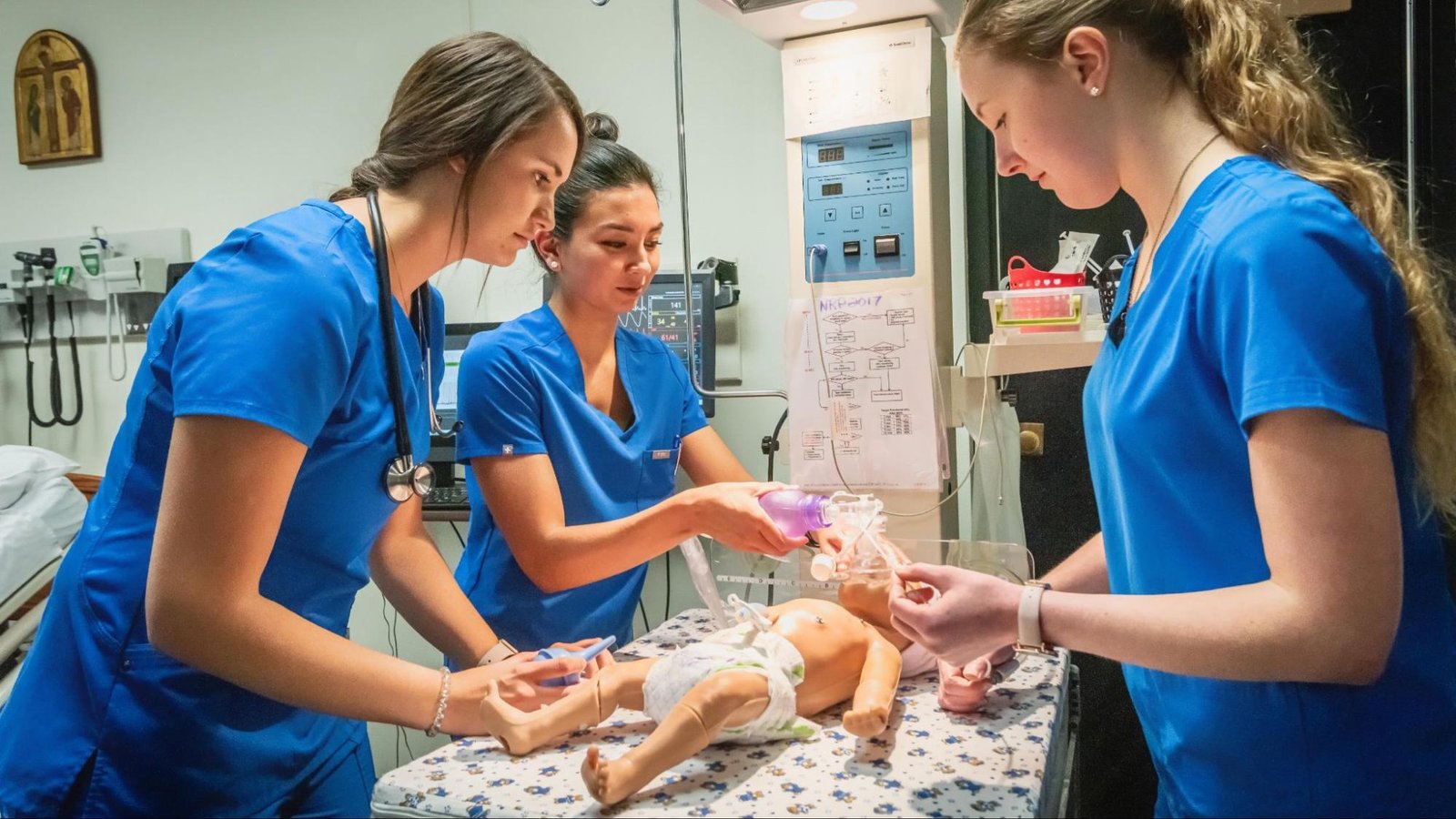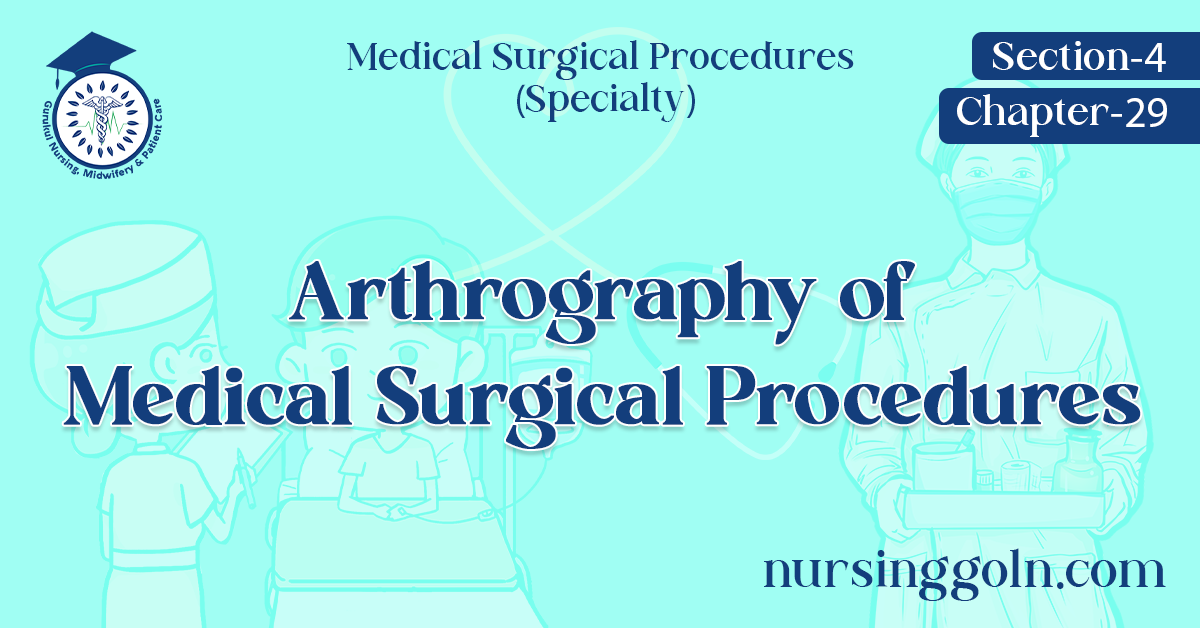Today our topic of discussion is Arthrography of Medical Surgical Procedures.
Arthrography of Medical Surgical Procedures

ARTHROGRAPHY
Arthrography is an X-ray examination of a joint using air, contrast media or both in the joint space. The purposes are to detect abnormalities of the cartilage and/or ligaments (e.g. tears) and to visualize structures of the joint capsule. This procedure is performed when a client complains of persistent knee or shoulder pain or discomfort. Usually, it is performed on an outpatient basis (Fig. 29.120).
Contraindication
- Acute arthritic attack
- Joint infection
- Pregnant.
Purpose
- To visualize the structures of the joint capsule
- To detect abnormalities of the cartilage and/or ligaments (tears).
Abnormal Findings
- Osteochondritis
- Dissecans
- Osteochondral fractures
- Cartilage abnormalities
- Synovial abnormalities
- Tears of the ligaments
- Joint capsule abnormalities.

Client Preparation
- Explain the procedure to the client to allay anxiety and fear and to increase the client’s cooperation
- Obtain a client history of allergies to seafood, iodine and contrast dye.
- An antihistamine, diphenhydramine (Benadryl), may be given orally or intravenously if there is a history of iodine or seafood hypersensitivity
- Provide ongoing assessment before, during and after the procedure, including vital signs, discomfort and other
- Inform the client that changes in body position may be asked for during the procedure.
- At other times, the client is to remain still
- Inform the client that he or she will not be asleep during the arthrography and may ask questions prior, during and after the test procedures.
Procedure
- Prepare the knee or shoulder area using aseptic site
- Local anesthetic is administered to puncture site
- A needle is inserted into the joint space (e.g. knee), and synovial fluid is aspirated for synovial fluid analysis
- Air and/or contrast medium is injected into the joint space, and X-rays are taken
- The knee may be bandaged Food and fluids are not restricted.

Post-procedural Care
- Apply an ice ace bandage to the legs, including the knee, if indicated to decrease swelling and pain
- Instruct the client to rest the joint for the time specified,usually 12 hours
- Inform the client that a crepitant noise may be heard with joint movement.
- This should stop in a few days; however, if the noise persists, the health care providers should be contacted
- Instruct the client to apply an ice bag with a cover to the affected joint to decrease swelling if noted.
- An analgesic for pain and/or discomfort may be ordered or suggested.
Read more:
